Average smartphone users are used to having all the settings located in a special application, through which you can disable or enable certain options. But not everyone knows that devices based on the Android operating system have a built-in menu with secret settings, designed to test various options and modes. As a rule, such a section is hidden, and you can access it only after entering a special command. Well, let's figure out how to enter the engineering menu on Android in the standard way. In addition, we will tell you how you can improve your phone significantly by changing some settings!
To begin with, Engineering Mode is a special section, or rather a small built-in application that allows you to test and change some settings of the operating system. Usually people are not much interested in the Engineering menu, preferring to use the smartphone with the initially selected parameters. But experienced owners of Android devices quite often look into such an interesting section to check the operation of certain sensors.
Moreover, using this tab with the settings you can increase the volume, change the sensitivity of the microphone, test the operation of wireless modules, including Wi-Fi and Bluetooth.
Not sure how many touches the screen supports? You don't even need to install an additional app, all you need to do is go to the engineering menu and run the test.
And if you think that you can't access the Engineering Menu without root rights, here too we want to make you happy. You can get to the section with the secret functions without root rights, and the version of the operating system also plays almost no role. For more convenience, you can use special applications that make the task much easier.
So how do you enter the engineering menu of your phone? As you have understood, the first way is associated with the use of additional applications, which are easily installed from Play Marketa. And the second - with the use of special codes designed for specific smartphone models. Yes, the manufacturer also plays an important role, so there is no universal combination for everyone yet.
Codes for access
Now you know that you can use special codes to enter the service menu. But there are a lot of manufacturers and processor models, so we recommend to read the table with the most popular combinations of numbers and symbols.
Code table
To compile the table of combinations we used the data from public sources, in particular from the official websites of smartphone manufacturers. It is possible that some information is already outdated, that's why we provide two or three codes for one phone model at a time. In general, find the name of your device in the table, and then enter the code listed a little to the right:
| Manufacturer | Code |
| Samsung | *#*#4636#*#* *#*#8255#*#* |
| Sony | *#*#7378423#*#* |
| Huawei, Honor | *#*#2846579#*#* *#*#2846579159#*#* |
| ZTE | *#*#83781#*#* |
| Xiaomi | *#*#6484#*#* *#*#4636#*#* *#*# 3646633 #*# |
| LG | *#*#4636#*#* |
| Realme | *#888# |
| Fly, Philips, Alcatel | *#*#3646633#*#* |
| MediaTek models | *#*#54298#*#* *#*#3646633#*#* |
As you can see, in this table were presented codes for the most popular smartphones. And if you purchased your device from one of the Chinese online stores, you may not know anything about its manufacturer at all. So what to do in this situation? The answer is to try to go through all the combinations or pay attention to universal codes.
Universal service codes
Universal codes for entering the engineering menu on your Android phone have been known for a long time. Such combinations, as a rule, are suitable for most more or less modern devices. There are quite a lot of such combinations, but we have selected only the most working ones, having carefully studied the user reviews:
- *#15963#
- *#*#364663#*#*
- *#*#3646633#*#*
Let's assume that you know the call code of the engineering menu, but how to use it? And here there is nothing difficult - to go to the section with the secret settings you use the usual application, through which all calls are made. And if you have any additional questions, we recommend reading the step-by-step instructions:
- Open the programThe caller can make a call.
- Deploying the virtual keyboard, through which the phone number is usually dialed. For those who have forgotten, it is necessary to click on the icon located in the bottom panel.
- Enter the secret code, designed specifically for your device. You can find the correct combination in the table above, if you haven't already studied it.
- Important observe all signsthat is, do not forget to put a grid, an asterisk, and numbers. If you miss at least one character, you won't be able to enter the engineering menu. It is quite easy to know that you have made a mistake. It is enough to enter one of the combinations and just wait. If the service menu opens without pressing the call button, then everything is correct. And if not, you are looking for another combination of digits.
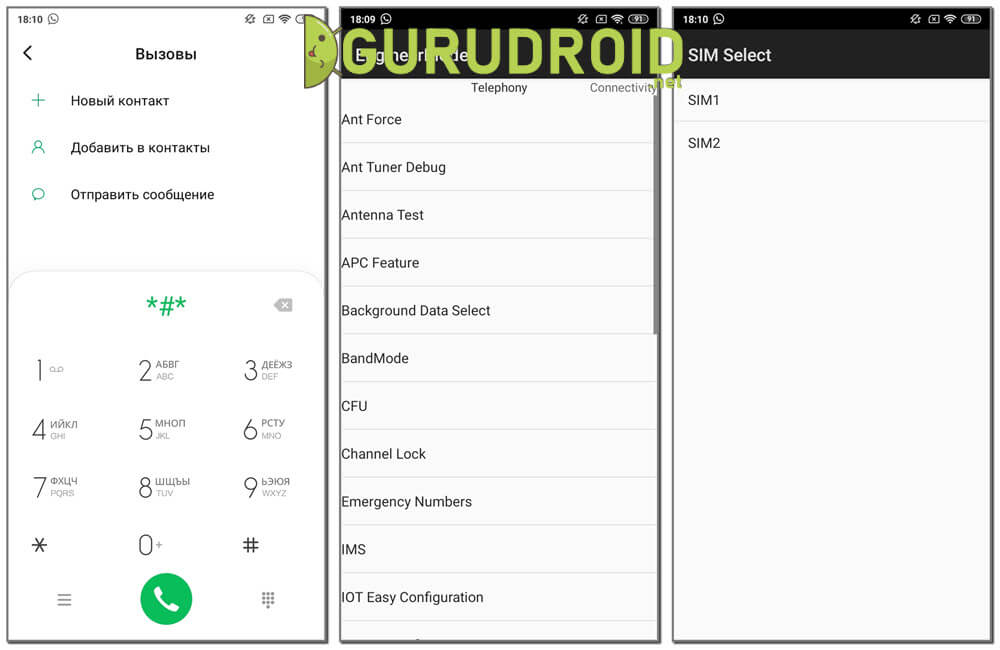
Please note that you can get into Engineering Menu even if your smartphone does not have a SIM card. And if you have a tablet that does not support calls, then use a special application that replaces the Engineering Menu.
Table of the most frequent requests
If you need to check certain parameters and sensors, we advise you to use combinations that directly redirect to the desired section. Here again, we advise to pay attention to the table, where all the most frequent requests are collected.
| Tested function | Needed code |
| Wi-Fi MAC address | *#*#232338#*#* |
| WLAN information | *#*#232339#*#* |
| GPS Check | *#*#1472365#*#* *#*#1575#*#* |
| Bluetooth version | *#*#232331#*#* |
| Bluetooth MAC address | *#*#232337#*# |
| Loopback batch tests | *#*#0283#*#* |
| Information about the touch screen | *#*#2663#*#* |
| Check the displacement sensor | *#*#0588#*#* |
| Display test | *#*#0*#*#* |
| Vibrating and backlighting test | *#*#0842#*#* |
| Sound check | *#*#0673#*#* |
| RAM version information | *#*#3264#*#* |
In principle, these commands will be enough to check most services and sensors. If you need a deeper analysis, of course, you will need to go directly to the engineering menu itself.
Applications
There are many free programs in the Play Store that are designed to access the service menu. Usually this option is used by owners of tablets, where there is no possibility to go to the section with hidden options in the standard way. Well, we have prepared several working applications that you can safely install! And if you have the desire and time, you can try to look for other similar utilities.
A simple program that does not take up a lot of free memory and has almost no behavior. The first time you install it you don't even need to perform any complicated actions, all you need to do is click on the application shortcut on the desktop and go to check a particular service or option. In addition to the settings from the service menu, you will find other well-known functions in the utility.
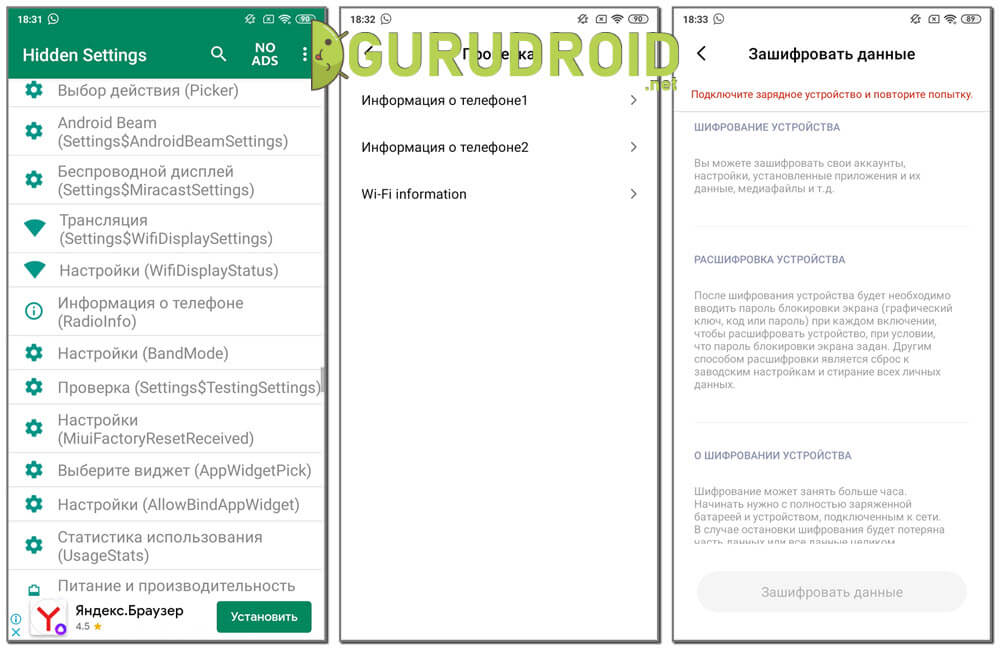
For example, you can easily navigate to special tabs, which in the usual settings application is quite difficult to find. As for advertising, it is present in the program, albeit in small numbers. But it can also be disabled by buying a paid subscription. If you have to choose between this utility and the standard Engineering Mode, the second option is preferable.
Engineer Mode MTK
As you can understand from the name, this application works correctly only on smartphones with a processor from the famous Chinese manufacturer MediaTek. And if your phone uses a chip from Snapdragon - this program will not work for you. Yes, the utility will be successfully installed, but when you start it, an unexpected error will appear.
In other cases you can use the program to find the secret combination if you have not managed to find it before. Initially, if the device supports making calls, the system will prompt you to dial a code to open the built-in engineering menu. Check the option "Alternative" and finally get to Engineering Mode. And to make sure this message never appears, check the "Don't ask again" box.

That's all, now you can work with previously hidden settings, as well as test the available sensors and functions. Agree that you don't even have to pick up the codes to enter the engineering menu beforehand. Specialized software does the job perfectly, making it much easier to find the right tab. And if this program doesn't suit your needs either, move on to the next utility from our selection!
Shortcut Master
And finally, we left perhaps the most interesting application, which can be used to solve several problems at once. So, if you open Google Play and enter Shortcut Master in the search box, you will see two similar programs from the same developer. So what to choose? That's right, we choose the free version of the software, because the available functionality is enough.
Now you need to find the code to enter the engineering menu on your Android device. And to do this is simple: open the application and click on the three dots icon located in the corner of the screen. In the dropdown list select "Secret Code Explorer"and wait for the system to load all the services. This will collect the installed programs, additional services, and some system options.
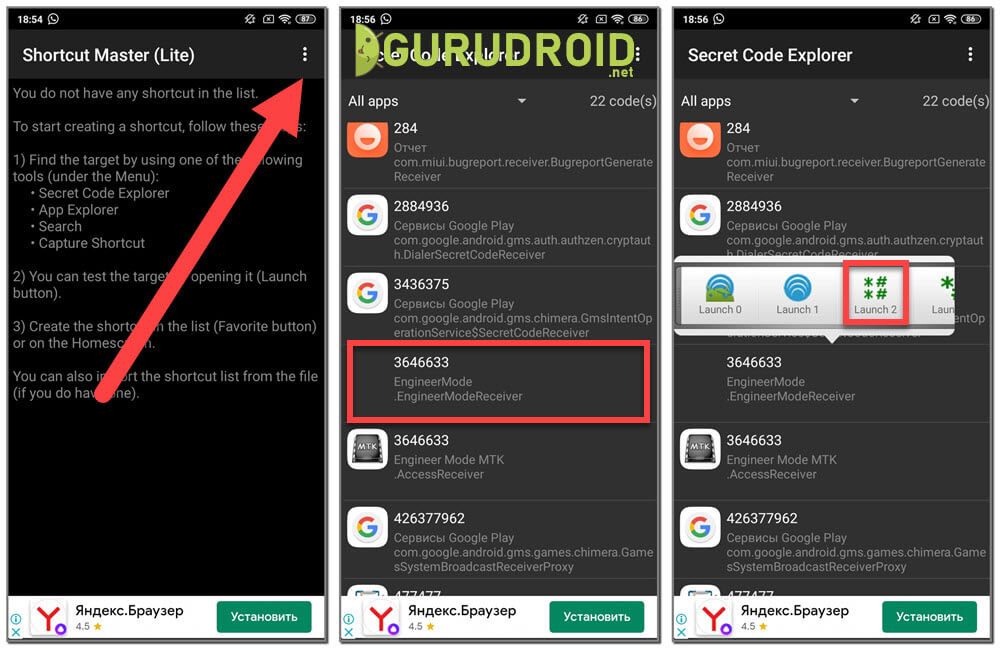
But you need to find the line "Engineer ModeThe "Service Menu", or more precisely, the code next to it. Press the item and mark the application that will be used to go to the service menu. It is recommended to choose the variant marked with an icon with grids (#). It turned out to be the most working and the simplest one. As a result, you will see the hidden settings for testing and checking certain sensors and services.
Basic functions on Android devices
Did you manage to get into the engineering menu? Great, so it's time to examine each tab in detail and figure out what can be changed through these hidden settings. As a rule, if you do not understand the purpose of a particular option, it is better not to touch anything. But as a useful experience, you can see how flexible and mobile the Android operating system is.
Telephony
This tab contains items that are related to the network and mobile communications. For example, you can test the modem, the antenna or select the optimal settings for the CFU. Usually you don't need to change anything as everything works correctly from the beginning. However, some people want to reduce battery consumption, so they turn off frequencies that are not being used by the mobile operator. It has been observed that this helps a little, but it helps.
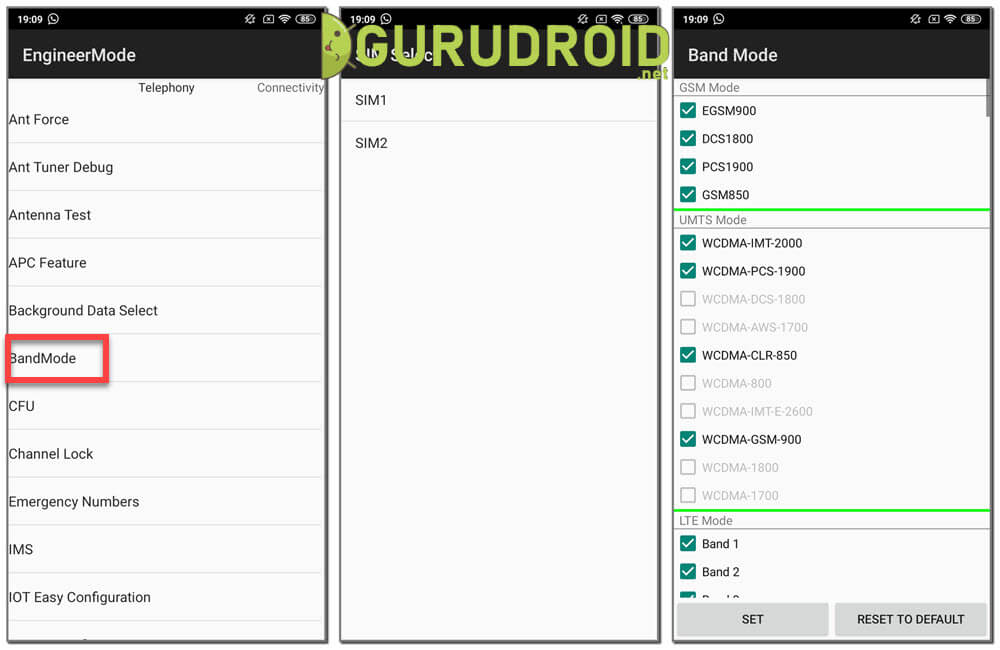
To change the parameters you need to open the "Band Mode"and then simply uncheck the unused frequencies. Finding out what you need to keep is not at all complicated - the official website of your service provider can help you with this. And if you scroll down the list a little further, you will see a sub-item designed to work with networks. For example, you can select 2G as the priority connection type, which will also have a positive effect on battery consumption.
And in some, mostly remote corners of the globe, there may be no modern 4G or 5G mobile Internet standard at all. So why waste your smartphone's resources trying to find a network that doesn't exist? That's right, no reason. Just turn off unnecessary networks and see how much longer the battery life of the device.
In fact, the average user can not go into this tab. In this section of the engineering menu there are no settings that can positively affect the performance of the smartphone. But accidentally wrongly changing the parameters of wireless modules is quite real. The main purpose of the Connectivity tab is to help you test Wi-Fi and Bluetooth. And if you think that it's about the speed of the Internet, that's not exactly true.
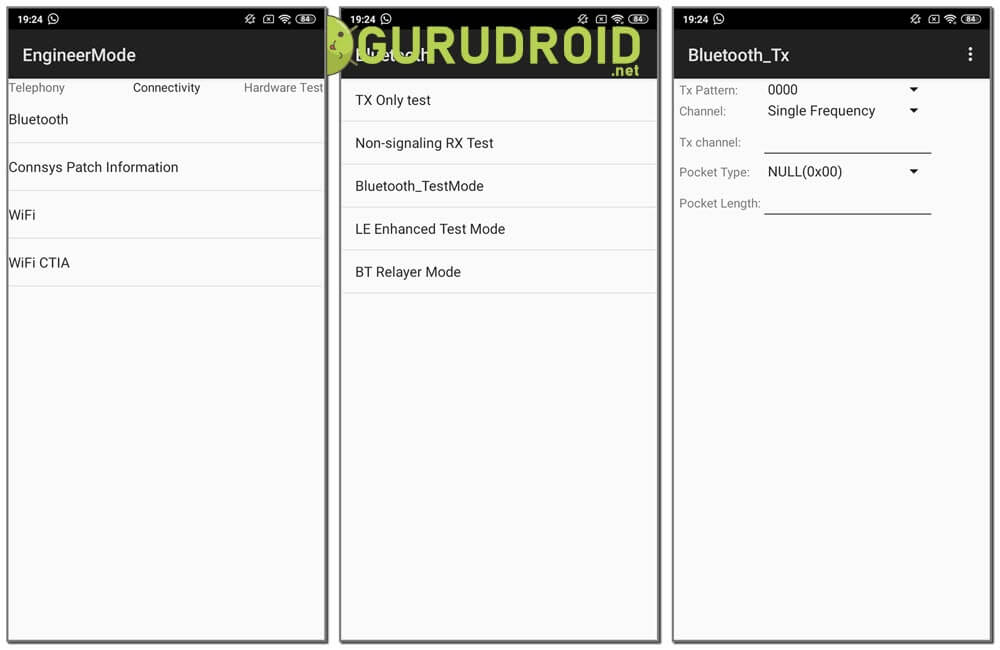
As for Bluetooth, you can get information about the strength of the current signal, although this data will be of little use to anyone. Yes, there are special points here that can be changed. But you can't do without special knowledge in the field of signal transmission. You can try to do everything at random, hoping for better network performance, but this is not the best option.
Hardware Testing (module testing)
The engineering menu functions hidden in this section are for testing certain modules and sensors. For example, you can check whether the sound or microphone settings are correct. And, if necessary, subsequently increase the overall volume. You can also use this tab to specify additional formats in which photos can be saved from the camera.
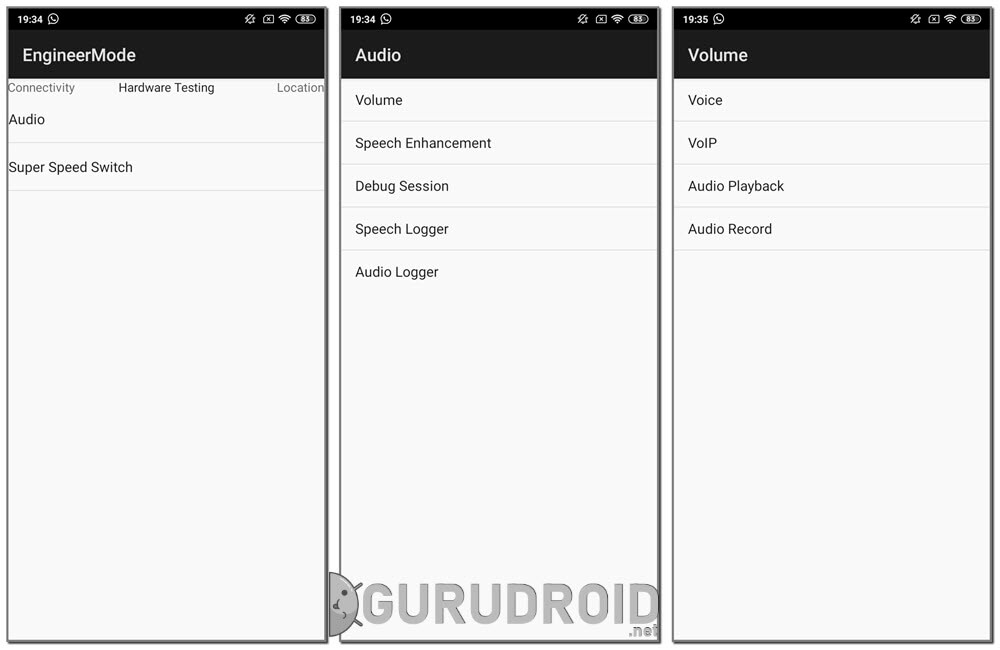
If you wish, you can test the display to see how many touches are supported. Do you suspect that there are some broken pixels? Open the Android service menu and check your smartphone screen. After performing simple actions, you can even calibrate the sensor and some other sensors. That is, you can handle the basic settings even without downloading additional apps.
Location
As you can guess from the name, this tab is designed to work with GPS and services responsible for positioning. For example, from here it is convenient to track the number of found satellites and the total signal level. And if necessary, manually make some adjustments. We would like to note that this section can be considered only for the sake of interest, because you do not need to change anything. The standard settings are quite enough for the correct operation of geolocation.
Log & Debugging
After entering the code and entering the engineering menu, you can find a tab designed for obtaining logs, i.e. information about the operation of the smartphone. For example, you can find out how well the phone's battery is working (voltage, consumption, average operating time from one charge).
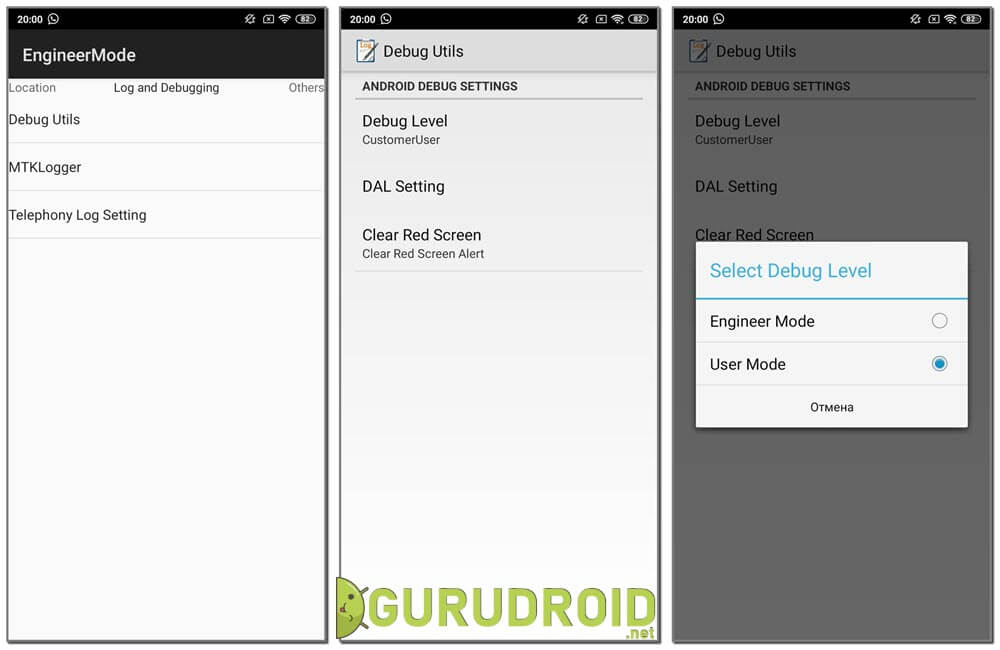
As a rule, this information does not give the average user anything, and it is designed exclusively for developers and mobile engineers.
Others (other)
And what is the last section of the engineering menu for? To be honest, all the settings that could not be included in one particular group are collected here. Not many options are available without root rights, but they are still there. For example, you can change font settings in applications and system tabs.
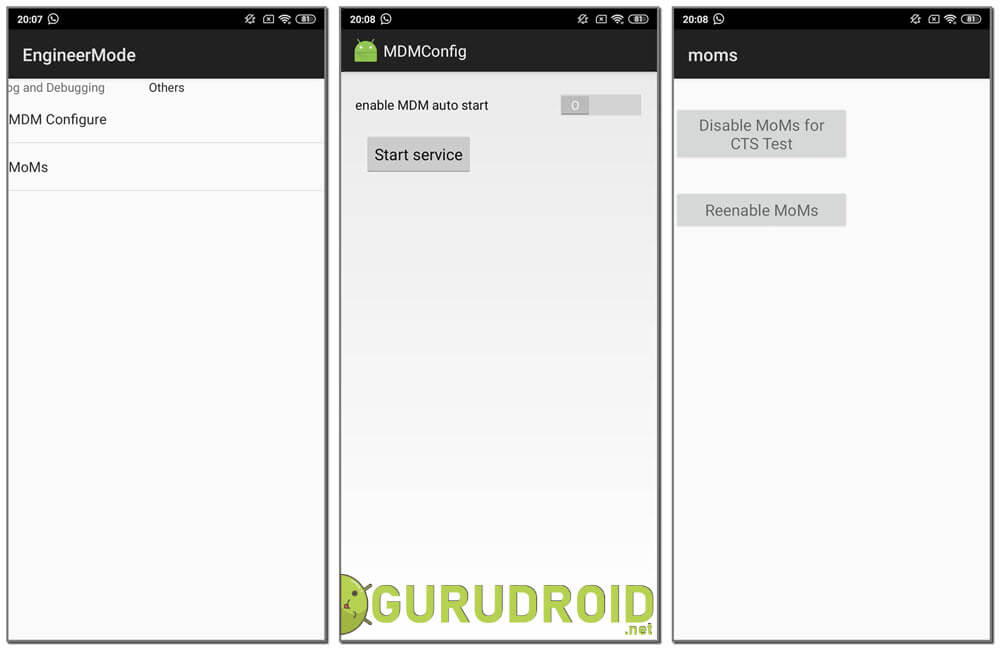
You can also activate the MDM mode or check the MoMs parameters. These names do not tell you anything? Then it is better not to change anything, because if you set it incorrectly, it is quite realistic to put the smartphone out of action!
In addition to simply checking the built-in services and options, you can improve your smartphone's settings. For example, you can increase the overall volume or calibrate the display. So, enter the secret code to go to the engineering menu and start changing certain settings.
Increasing the sound, speaker volume
Have you noticed that you occasionally miss incoming calls due to low volume? Then we recommend increasing the overall sound level through the standard service menu. Initially it's difficult to find the right tab, let alone change specific parameters. That's why we have prepared a step-by-step instruction that will help you to do everything correctly:
- Open the engineering menu and go to the tab "Hardware Testing".
- Go to "Audio"and select the mode you want to configure. On different phones the display of Engineering Mode may be different, so we advise to find the instructions specific to your model of device. But for example, let's note that to set the normal volume (without a connected headset) use the tab "Normal Mode".
- In the drop-down list select the option that we are going to change. For example, if you want to increase the speaker volume during incoming calls, check the option "Ring". And then in the column "Value"Set the overall sound level (from 0 to 255). You can also use pre-made levels created by the developers.
- To save all the settings, click on the button "Set".
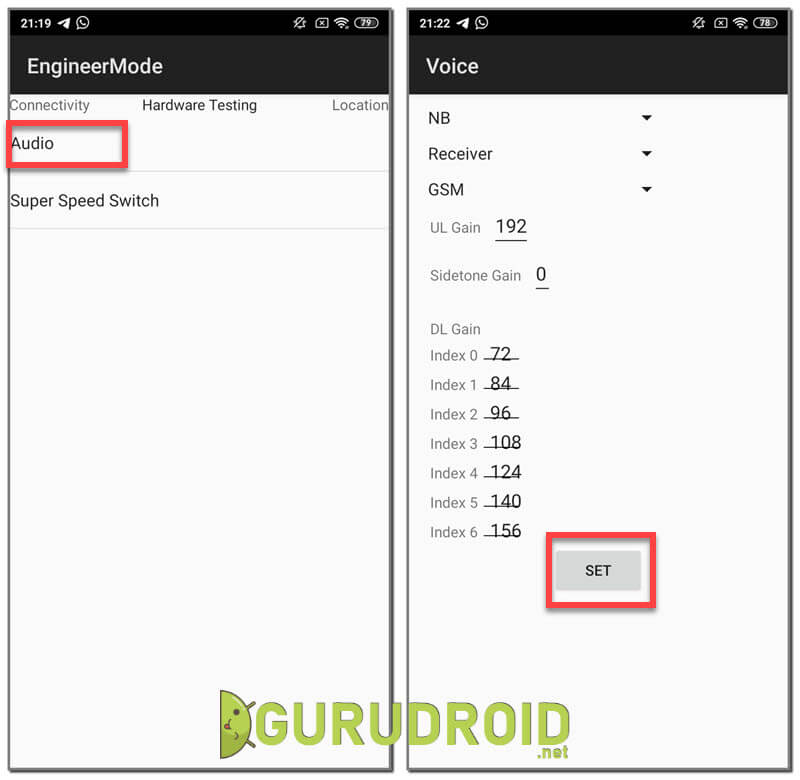
And after that all you have to do is to reboot the device to make the changes take final effect. To check, we suggest that you play some music or make a call. Did the volume increase? Then you have done everything correctly!
GPS Setup
On phones, most often with an MTK processor, errors related to GPS operation are occasionally encountered. Users may notice that the location is not determined accurately, or even to find out the coordinates is not possible. The main reason for such problems is the wrong geolocation settings. But they can also be changed, using the engineering menu. For clarity we have made a step-by-step instruction, so we recommend to read it:
- Turn on the GPS and Wi-Fi, before going out on the balcony or other open terrain. If this is not done, the satellites may not be displayed at all.
- Open the service menu and go to the tab "Location"and then click on "Location Based Service".
- Many tabs appear in front of you, but you should pay attention to the item "Enable EPO" и "Auto Download". If you don't know, EPO is a special file that contains information about satellites, more precisely their flight path. Find the necessary lines and check the boxes next to them.
- Back to "YGPS"and open the tab "Satellites". The screen will display an incomprehensible field with red dots. This is a map with satellites that the smartphone can see, but so far it can't set up a proper connection. To fix the situation, go to the menu "Information", then put a checkmark in the line "Full"and select "AGPS restart".
- After performing the actions, all satellites should become visible, i.e. they should be colored green. However, when working from home, it is quite possible that some objects will remain red. This is absolutely normal.
And what happens next? Nothing special, just reboot the phone to save all the changes.
Bluetooth Setup
It is possible to change some Bluetooth settings through the engineering menu, but it is not certain that the signal will be stronger after that. If the connection is correct, we recommend not to change anything at all. And as an experiment, you can perform some tests, for example, BT Relayer Mode.
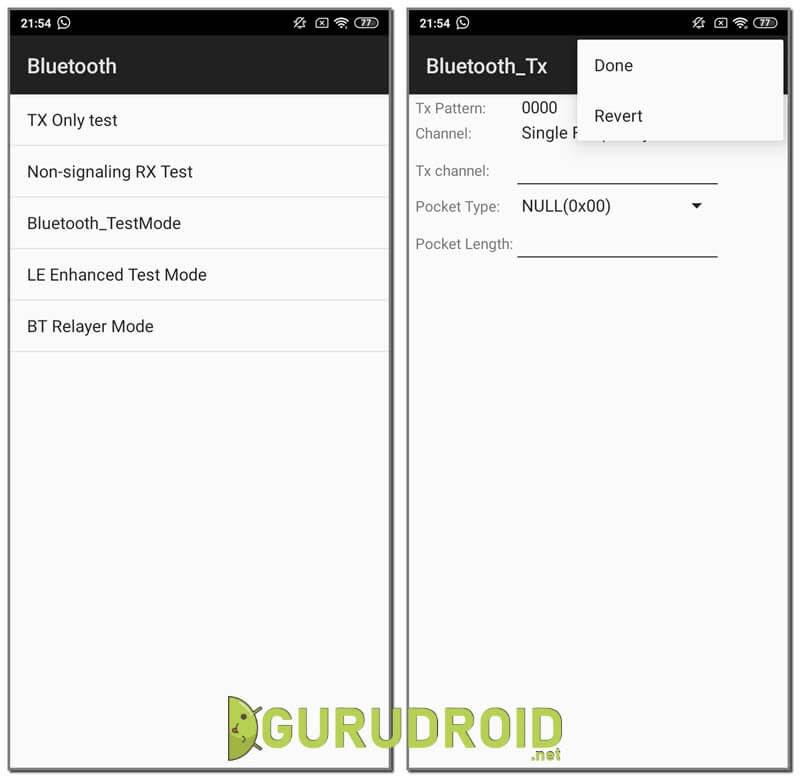
As practice shows, it is better not to touch the tab with the wireless modules at all, and leave the values that were originally set.
Checking the microphone and headphones
In addition to increasing the volume of a phone call through the service menu, you can also check the operation of the microphone or headphones. This will allow you to understand how well the smartphone plays or records sound. In general, I managed to find the right tab only on the device with the Snapdragon processor, although it probably depends on the installed firmware and Android version. To test the overall volume you need to go to "Speaker" and listen to the numbers that will be played back. As a rule, if everything can be heard clearly, there is no problem with the speaker or headphones.

As for the microphone test, in this case you need to open the tab "Top MIC". In front of you you will see a special scale that is used to measure noise. All you need to do for the test is to say a word loudly or clap your hands. If everything works correctly, you will see a green message on the screen "Test Pass".
Calibrating the battery
Today's smartphone batteries have virtually no so-called "memory effect". However, you should periodically calibrate the battery so that the charge indication is displayed correctly. You can perform a similar procedure in manual mode - just wait until the battery has reached its maximum capacity, and then restart the device. But how do you know when the limit is reached?
Special applications will help, but owners of Samsung smartphones can also get the necessary information through the engineering menu. To do this, open the application for making calls and enter the command *#0228#and then press the call button. As for the other phones, unfortunately, such a code does not work there.
Checking the camera
You can also check the camera's operation without the engineering menu by simply launching the corresponding application. However, this way you can't find out how a particular module shoots if you have a dual or triple camera installed in your phone. Usually Engineering Mode is used to find out the cause of an error when the smartphone refuses to take pictures at all. It is possible that it is affected by an installed application or that one of the modules is mechanically damaged.

To dispel all doubts, just go to the section "Camera", click on the button "Capture" and make sure that the photo was successfully taken. If so, select "Pass". After that, the system automatically prompts you to test other camera modules as well.
Screen and sensor calibration
Problems with the screen can be observed even on new smartphones, and the cause of this problem is not always a mechanical damage to the sensor or matrix. It may be enough to perform a simple calibration, after which the error will disappear. The same applies to sensors (gyroscope, accelerometer, proximity). Often there are failures in the work of the light sensor, which interferes with a comfortable conversation on the phone.
It is also possible to calibrate the required modules through the engineering menu by opening the corresponding tab. As an example, let's look at the proximity sensor setting:
- Go to "Proximity sensor".
- Press the button "Calibrate"and follow the next steps, and then be sure to restart the device.

If we talk about display calibration, the principle is almost the same. You need to go to the tab "Sensor", select "Sensor Calibration"and then clear the default settings with the "Clear Calibration". And at the end press "Do calibration" and finally complete the procedure. Almost always the screen starts working much better after all the actions have been performed.
By the way, you can read more about calibrating the sensor here.
Through the standard engineering menu, which we looked at before, it is not possible to reset the smartphone to the factory settings. However, there are several codes that allow you to do this:
- *2767*3855#
- *#*#7780#*#*
- *#*#7378423#*#*
You can also use a special Recovery section, sometimes also commonly referred to as the service menu. To enter it, simply turn off the device completely and then simultaneously press the power button and the volume up key.
Read more about resetting in the instructions.
And then select the item "wipe data/factory reset", further "Yes - delete all user data" и "reboot system now". Keep in mind that in the end all data will be deleted from your device, and the default settings will be successfully restored. And if you just want to restore the previous settings, changed through the engineering menu, you need to delete the corresponding file. This is a complicated procedure that can only be performed on a device with root rights.
Finished all the settings that you originally planned? Then it's time to exit the phone's engineering menu. It's easy to do - you need to minimize or close the application in the standard way. If you're using gestures to control, swipe your finger across the screen from top to bottom. And if touch buttons are displayed, then tap on the central "Home" key.
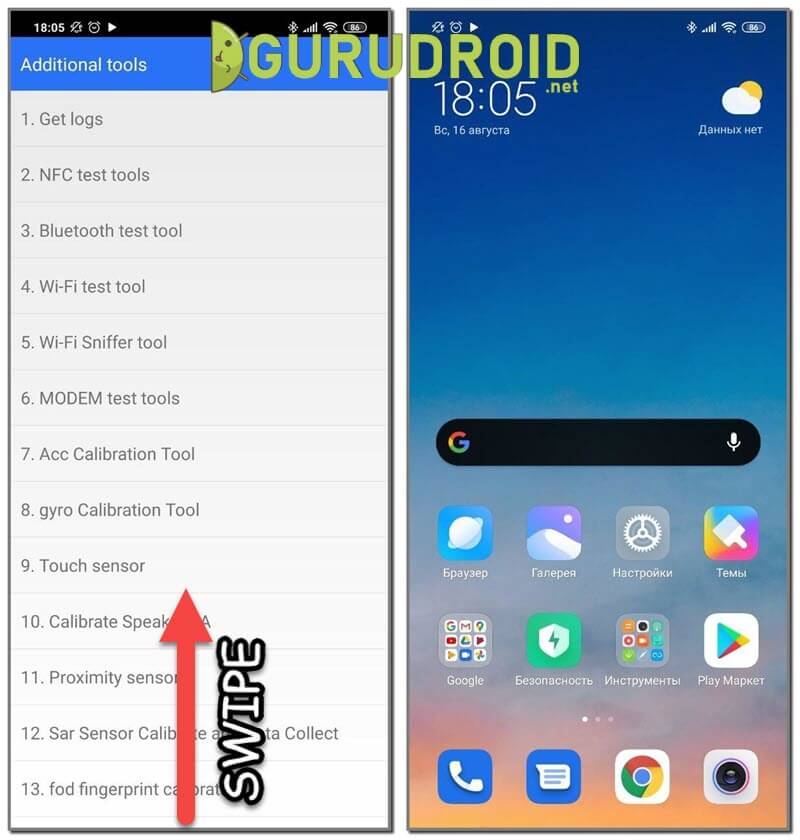
But the service menu should not be confused with the Recovery menu. To exit the latter you need to press the power button for about 5-10 seconds.
Answers to popular questions
Question: Why can't I enter the engineering menu?
The only reason is the wrong code to go to the service menu. Read the table above and try to find a combination that works on your device. You can also use additional applications to find the right combination.
Question: Can I speed up my smartphone through the engineering menu?
Theoretically it is possible, but you will not notice a big performance gain.
Question: MTK Engineering Mode - what is it?
This is the name of the engineering menu on smartphones that run on MediaTek processors.
Q: Is there a Russian engineering menu on Android?
Yes, on some older smartphones there was an engineering menu in Russian.
So, now you know exactly how to enter the service menu on your Android phone or tablet. You don't have to think that you can make any great improvements to your smartphone through this section. But to test the services and sensors, as well as to adjust some parameters a little bit is quite realistic.


